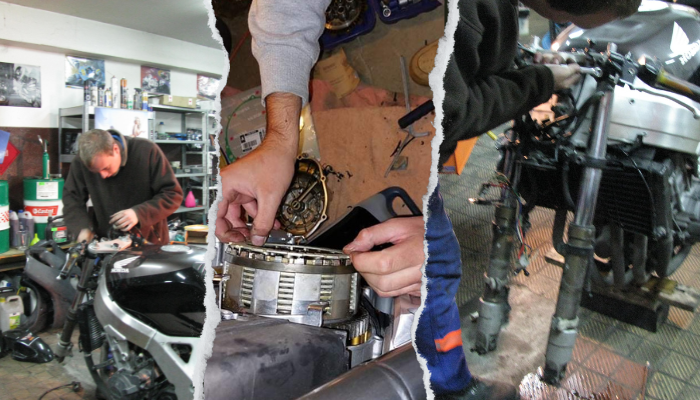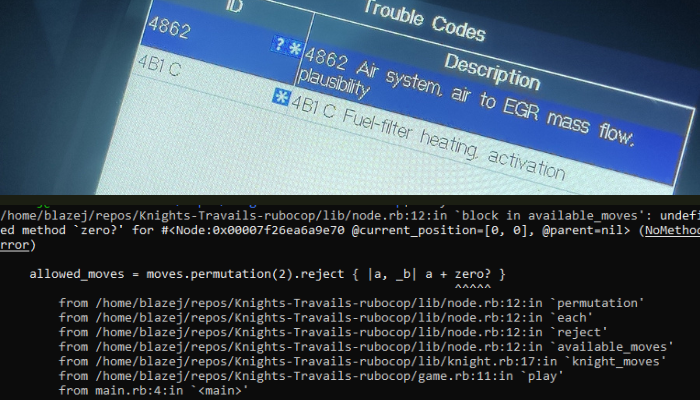From Wrenches to Code - Why Learning to Code Is Like Fixing a Car
It all started with a frustrating car repair. For two months, I had been wrestling with an issue that seemed impossible to solve.
One day, I finally reached my breaking point. I sat back, took a deep breath, and tried to find some positives in the situation.
Surprisingly, that’s when it hit me: fixing cars and learning to code have so much in common. This is a story about how those two worlds collide.
Fixing Cars: A Childhood Passion
Let me take you back to where it all began. I was just 11 years old when I bought my first moped—a Romet Pony.
It was my introduction to the world of engines, grease, and endless tinkering.
Soon after, I joined a forum full of like-minded people who shared tips, tricks, and solutions to common problems.
A year later, I upgraded to a slightly better Romet Ogar 200, a Polish moped with a Czechoslovakian engine. Sounds fancy, right?
Well, not exactly. The previous owner had installed a poor-quality piston. Every summer, I would take it out for a ride, only to have the engine seize up after warming up.
Imagine the frustration of being 12 years old, spending holidays at your grandfather’s house, with no internet, no tools, and a moped that just wouldn’t work.
Still, I didn’t give up. I would tinker, troubleshoot, and try to figure out the problem.
When I finally got back home, I’d dive into the forum for answers. That forum was a goldmine of knowledge and camaraderie.
It wasn’t just about fixing bikes; it was about connecting with others who shared the same struggles. Some of the friends I made there remain close to this day.
The Value of Communities
Fast forward to today, and the parallels between those forums and modern programming communities like Stack Overflow, Discord, or even Reddit are crystal clear.
Whether you’re debugging code or diagnosing a car issue, these communities are lifelines. Need to fix a car problem? A quick Google search will bring up countless forum threads, blog posts, and even step-by-step solutions.
The same goes for coding. You’re never alone in solving a problem—someone, somewhere, has likely faced the same challenge.
Years of Repairs and Lessons Learned
Over the years, I’ve owned all kinds of vehicles—motorbikes, cars, you name it.
Some were reliable, while others were, well, let’s just say “character-building.” I’ve tackled repairs on my friends’ cars and on my own.
I’ve done everything from pulling entire engines out to complete rebuilds. Once, during a high school road trip across Poland, I even had to take apart an engine by the side of the road.
Those moments taught me perseverance, problem-solving, and patience.
The more repairs I did, the more I started seeing patterns. It wasn’t immediate—it took years.
Back then, we didn’t have smartphones or always-on internet. I would jot down notes, remember forum advice, and slowly piece together solutions.
Each problem was like a puzzle, and I loved figuring out how all the parts worked together.
Doesn’t this sound familiar to anyone who’s learning to code?
Troubleshooting: The Art of Debugging
Troubleshooting is an art, whether you’re working on a car or a program. Let me paint a picture for you.
Imagine your car’s engine is idling rough. Immediately, you start thinking: could it be the fuel-air mixture? Maybe there’s a faulty sensor or a clogged EGR valve.
You grab your diagnostic tool, check for error codes, and start narrowing down the possibilities. No air leaks? Great.
Next, you check if the turbo is spinning freely or if the DPF is clogged. Piece by piece, you eliminate the options until you find the root cause.
In coding, the process is strikingly similar. Debugging tools are your diagnostic devices. They point you to the error—file, line, and sometimes even the specific variable.
From there, it’s all about narrowing down the possibilities. Maybe the argument passed to a function isn’t what it should be.
Maybe there’s an issue with how data flows through the program. Step by step, you find the issue and fix it.
Tools of the Trade
Let’s talk tools. In car repairs, you have your spanners, wrenches, and specialized gadgets.
Each tool has its quirks and functions. Programming has its own toolbox—IDEs. Just as you’d swap a socket for a hex key when working on a different engine part, you might tweak your IDE’s theme or settings to better suit the programming language you’re using.
Even tests have their parallels. When a car starts, it runs self-diagnostics, checking sensors and systems. If all’s well, no warning lights appear, and you’re good to go.
Similarly, automated tests in programming ensure that your code runs smoothly before you deploy it.
Learning Curves and Growth
Both coding and car repair share a steep learning curve. They’re about trial and error, breaking things down, and continuous learning.
Each mistake is an opportunity to grow—whether it’s a seized engine or a crashed app. Over time, you learn to see the big picture.
You start understanding the entire system, whether it’s an engine’s mechanics or a software architecture.
I can confidently say that both skills have shaped my mindset. Programming, in particular, has refined my problem-solving abilities.
It’s taught me to stay calm in the face of challenges and to embrace the process of figuring things out.
The Joy of Completion
Here’s the thing about fixing cars and coding: the dopamine hit is real. When you solve a tough bug or get an engine running smoothly, it feels amazing.
It’s not just about the task—it’s about knowing you’ve conquered a challenge.
For me, realizing the connection between these two worlds has been a game-changer. It’s helped me approach both trades with a sense of curiosity and determination.
And I can tell you this: there’s nothing quite like the satisfaction of a job well done.
So, what about you? Have you ever noticed similarities between coding and other parts of your life? I’d love to hear your stories. Share your experiences in the comments, and let’s learn from each other.


